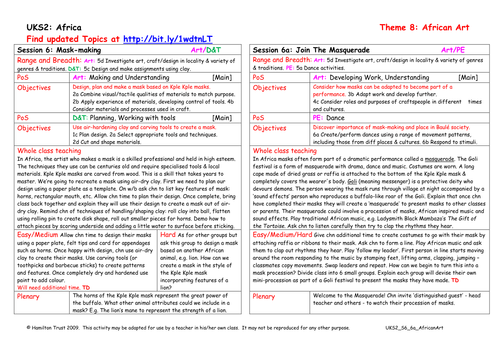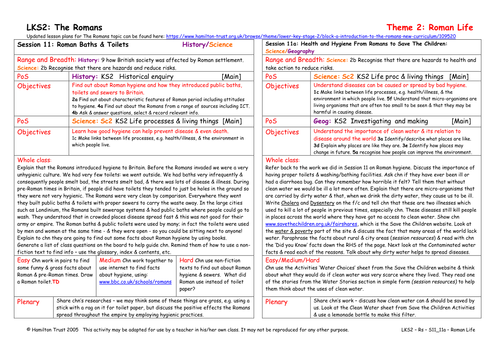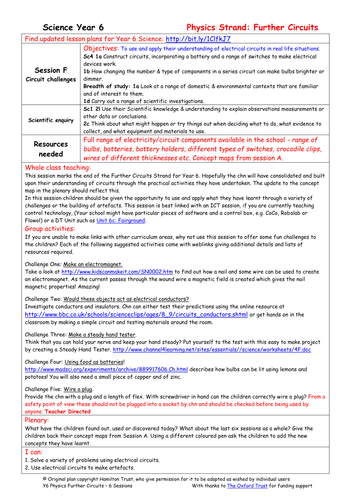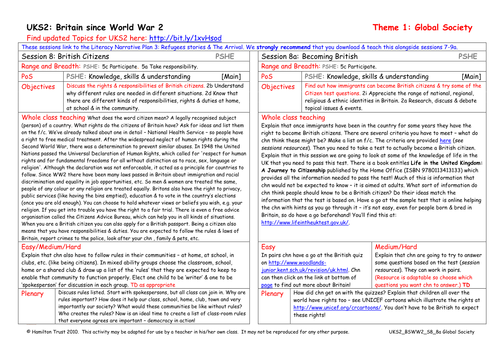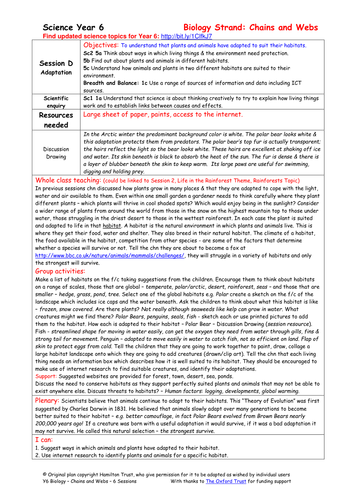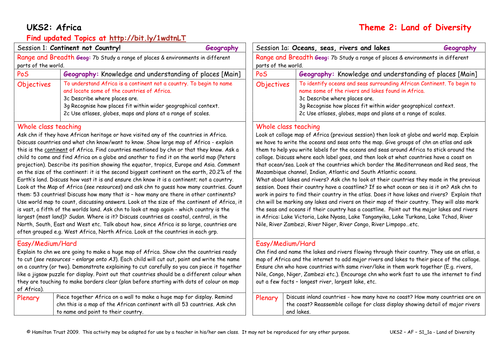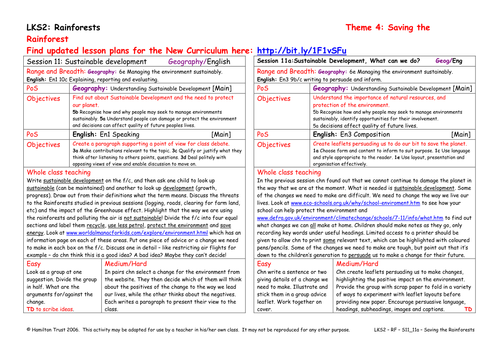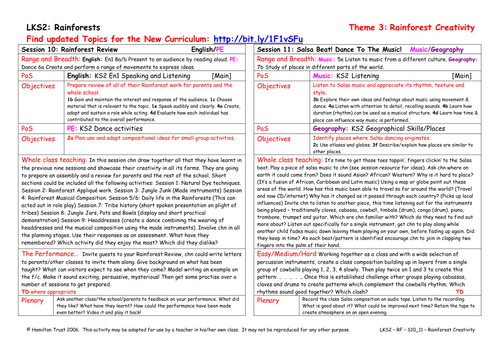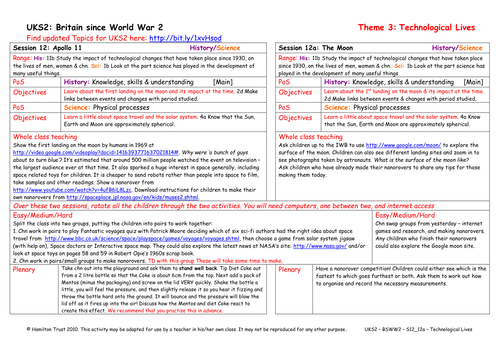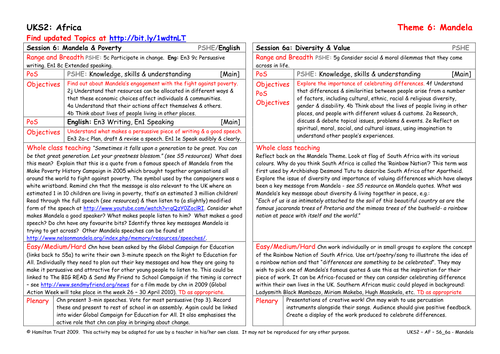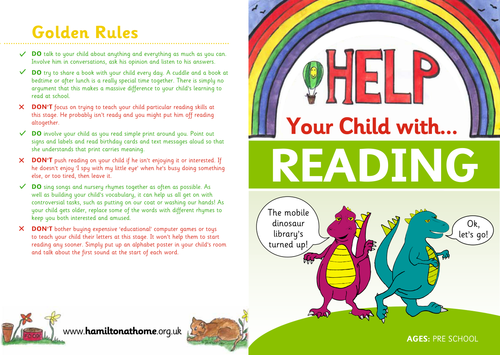
397Uploads
10016k+Views
11626k+Downloads
All resources

Devices to build cohesion - Presentation & Exercises
Grammar teaching presentation and grammar exercises.
The teaching presentation includes 22 slides that cover:
Devices to build cohesion within and across paragraphs.
Pronouns
Determiners
Subordinating Conjunctions
Adverbs
Paragraphs
Adverbials (including place, number, time)
Topic Sentences
Each cohesive device is introduced, clearly explained, and an example is provided. The class is asked some simple questions to check understanding.
We then provide grammar exercises for children to:
Practise using conjunctions correctly
Practise using cohesive devices within a paragraph
Each collection of exercises is made up of three sets. Set A is the easiest or most accessible, Set C is the hardest or uses more complex language.
This resource is aimed at UKS2. Use the presentation to introduce or revise a grammatical concept as a stand-alone lesson or add on the accompanying exercises for children to practise and apply their knowledge.

Children discuss the advantages and disadvantages of texting and emails, then write an email with attachments to an email ‘pen pal’ about their favourite session from this topic.

Mask Making
Make a Kple Kple mask using air-dry clay. Based on their research children design and make their own versions of these fascinating African masks.

Roman Baths & Toilets
In this session children look at how the Romans improved hygiene arrangements across the empire by providing clean water and drains for sewage. Children investigate Roman toilets and baths, and discuss the positive effects of these innovations.
Suitable for years 3 and 4.

Circuit challenges
In this session children apply their knowledge and understanding of circuits in other subject areas or through a variety of practical challenges. Iron nails, lemons and the steadiest of hands are needed in this session!
Suitable for Y6 pupils.

Batik Technique
Introduce children to the techniques of flour resist batik and explore the history of batik in Africa. Children get a chance to practise the methods themselves.

Family Food
Consider where the food that we eat comes from. Grown at home, locally or in another country? Discuss food miles. Who does the shopping, cooking, washing up? Where does the water come from? Cook a meal/dish and write the recipe to send to your link school. Suitable for years 5 and 6.

Household Gadgets
Children discuss labour-saving gadgets and chores which are still time-consuming or unpleasant. They then work in groups to design their own gadget and present it to the rest of the class as in the Dragon’s Den.

British Citizen
Find out what the rights and responsibilities of a British citizen are. Discuss why rules or laws have to be passed for communities to function properly. Children work in groups to list the ‘rules’ needed in their communities, e.g. home, town, school, clubs.

Adaptation
Did you know that Polar Bears don’t actually have white fur? But what they do have are many other adaptations that make them well suited to the Polar habitat. Children identify how other creatures have adapted to their habitat. Suitable for Y6 pupils.

Italy & The UK
Following the work in Session 11, chn consider how Italy fits into the categories of countries in the modern world. After a discussion of the difference between developed and developing countries, children identify the differences between Italy and the UK.
Suitable for years 3 and 4.

Oceans, seas, rivers and lakes
Following their personal choices in session 1, children research the countries they identified. They mark physical features on their maps, including rivers, lakes, deserts and mountains. They also identify the oceans and seas.
Suitable for years 5 and 6.

Sustainable development - What can we do?
All talk no action...! Not in this session. Children use the internet to find out what else we can do before creating leaflets to persuade other children and adults to make the change!

Rainforest Plants - Vines
Epiphytes are small plants that live not in the soil but happily up on the branches of trees in the layers of the rainforest. In this session children find out more and create pastel epiphytes for the Rainforest display.
Suitable for years 3 and 4.

Rainforest Review
This session brings together all the parts of the rainforest creativity theme. From music created with made instruments, dance and the wearing of headdresses to the displaying and showing of pots. Celebrate everything that has been achieved.

Apollo 11
Children watch the first manned landing on the moon, then build a nanorover or play online games about space travel.

Diversity and Value
Through artwork/ poetry/song the significance of the ‘Rainbow nation’, and of valuing diversity, is celebrated.
Suitable for years 5 and 6.

Everything In Its Place
Children spot which items are out of place in a 1950s living room, and dress a character from each decade.

Magnetic Attraction and Repulsion
Following session 7, children look at which types of material are attracted by magnets and which are not. Using an experimental approach, they also investigate the two magnetic poles on a magnet and what happens when like is placed against like, etc.
Suitable for years 3 and 4.



